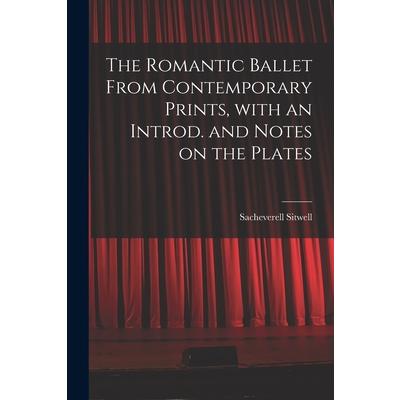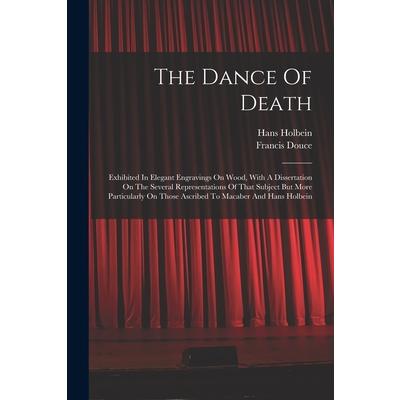HowExpert Guide to Ballet
If you are thinking about taking ballet classes, have a child who is starting to dance, or want to know more about ballet, then HowExpert Guide to Ballet is for you. This book covers many things, such as: - How to find the best studio for you.- Elements to look for in classes from ages 3 to 18. - What to wear to class if you are a child or an adult dancer.- Things to bring to class in your dance bag.- How to make the perfect ballet bun.- Proper ballet etiquette.- How to behave in class, at the barre, and when dancing in the center of the room. - Warm-up exercises to do sitting and standing.- Basic feet and arm positions.- The five major methods of ballet instruction.- Advice and encouragement for adult beginners.- The history of pointe shoes.- How dancers soften or harden their pointe shoes from ripping them apart to baking them in the oven.- What dancers wear inside their pointe shoes to make them comfortable.- How to Identify "dead pointe shoes" and why they are dangerous.- The history of male dancers in ballet.- Information for parents whose sons want to take ballet classes.- What Men's Classes and Partnering Classes are.- Featuring expert advice, tips and tricks, and stories from the barre.About the AuthorLauren Dillon is a multifaceted writer who has been dancing classical ballet for over two decades. She has worked as a dance instructor for children and enjoys sharing classical ballet with others. Born and raised in Florida, Lauren was inspired to take ballet classes by her mother, who took ballet classes as an adult. Lauren earned her Bachelor of Arts in Russian & Eastern European Studies from Florida State University (FSU). After moving across the country to California, Lauren earned her Master of Arts in Museum Studies from the University of San Francisco. When she wasn't visiting museums or working in a performing arts archive, she continued to dance at San Francisco Ballet and Alonzo King LINES Ballet.HowExpert publishes how to guides by everyday experts.
The Shapes of Change
"What is strikingly new about Miss Siegel's achievement is that she goes beyond the usual kind of historical reassessment. . . . She performs on behalf of this most evanescent of the arts an act of significant recovery. By tracking down--often in rare stage revivals, on film or on videotape--as many of the works by major creators of the last half century as survive, and by describing them . . . in a manner that combines accuracy and imagination, she has enriched our knowledge of the past and added immeasurably, to our resent stock of critical resources."--Dale Harris, New York Times Book Review "Siegel has a gut feeling for dance and a razor-sharp intelligence about it. It's an irresistible combination."--Margaret Pierpont, Dance Magazine "After you've seen and felt dance this deeply--even vicariously--your way of looking at dance will never be the same."--William Albright, Houston Post She sees, acutely, with her muscles as well as her eyes. She thinks about dance as much as she experiences it. . . . This is dance choreography reconstituted. Dances leap off the page. . . . The ability to do that is extraordinary."--Jean Bunke, Des Moines Sunday Register "The sections in which she describes the dances themselves make up the bulk of the book and they are profoundly illuminating. . . . These descriptions represent an amazing literary, as well as critical, accomplishment, for they are both accurate and resonant, both objective and enlightening, both formal and personal."--Laura Shapiro, The Real Paper "Siegel draws on her years of experience as a working dance critic, a profession she has helped to shape, and brings to a range of American dance a sense of honesty and a mind that wants to understand the antecedents of what is currently in vogue as the dance explosion."--Iris M. Fanger, The Christian Science Monitor
Dancing in the Muddy Temple
Drawing from nature experience, dance, anthropology, and shamanism, Dr. Eline Kieft explores improvised movement as a pathway to insight, healing, transformation, and direct interaction with source. Dancing in the Muddy Temple takes the reader on a journey through multiple layers of embodied spirituality based in movement and embedded in the land. Addressing existential questions outside of mainstream religions, the book seeks possibilities for a spirituality that dances with the sacred life force within and all around us. Starting within the body, and always using movement as a way of knowing, Kieft expands on further concrete and subtle layers of connection. A sensorial immersion in the land develops into an expansion of consciousness and meeting intangible aspects of nature. After exploring the role of ceremony in contemporary times, the book concludes with an unexpected chapter on healing, drawing together insights for a dynamic approach to health and wholeness as innate part of an embodied spirituality. Moving seamlessly between her personal, professional, and academic background, Kieft creates an unusual scholarship in which bodily and autobiographical narrative are neatly interwoven with interdisciplinary literature. Its uniqueness lies in a radical integration of theory and practice, which brings an aliveness to the material that stirs an inquisitive desire to move, rooted in language that inspires confidence for personal inquiry into a rich and complex territory. This inspiring book offers an intricate road map to explore and strengthen the interwovenness of various layers of self, surroundings and the sacred, distilling tools for a practical, moving spirituality of the everyday.
Lilly
"When I stepped to the center mark and that spotlight hit me, I thought, Aqui estoy mami, aqui estoy!""When I stepped to the center mark and that spotlight hit me, I thought, Aqui estoy mami, aqui estoy!"Growing up in an orphanage in the Bronx, separated from the mother she adored, Lilly never knew the care and loving attention of a stable family. But she didn't let mounting obstacles and family tragedy stand in the way of her dreams. From the time she was a little girl, when the nuns first took her to see the Rockettes perform, Lilly was driven to become a dancer. This is the compelling story of her spirited journey from the Lt. Joseph P. Kennedy Jr. Home for Children to the great stage at Radio City Music Hall-where she danced her way into history as the first Latina Rockette.Today, Lillian Col籀n inspires others to find the joy in dancing and was recently featured in Forbes' 50 Over 50 2021 as a woman of excellence.
A Guide to a Somatic Movement Practice
An introduction to embodied movement through the workof a dance education pioneer In thisintroduction to the work of somatic dance education pioneer Nancy Topf (1942-1998), readers are ushered on a journey to explore the movement of the body through aclose awareness of anatomical form and function. Making available the full textof Topf's The Anatomy of Center forthe first time in print, this guide helps professionals, teachers, and studentsof all levels integrate embodied, somatic practices within contexts of dance, physical education and therapy, health, and mental well-being. Hetty King, a movement educator certified in theTopf Technique(R), explains how the ideas in this work grew out of Topf'sinvolvement in developing Anatomical Release Technique--an important concept incontemporary dance--and the influence of earlier innovators Barbara Clark andMabel Elsworth Todd, founder of the approach to movement known as"ideokinesis." Featuring lessons written as a dialogue between teacher, student, and elements of the body, Topf's material is accompanied by twenty-oneactivities that allow readers to use the book as a self-guided manual. A Guide to a Somatic Movement Practiceis a widely applicable entry point into the tradition of experiential anatomyand its mindful centering of the living, breathing body.
Tap Talk, Tidbits, and Tips for Dilettante Tappers
If you're looking for an old-fashioned honest chapbook about the experience of being an amateur tap dancer, look no further. Welcome to the world's first and only tap book written by a student of the art-not a teacher, a studio owner, or an expert. Delve into these real-life tap adventures and let them inspire you to bring the magic of the dance into your own life. This humble chapbook will open your mind to the world of this unique form of dance in ways that only a student of the art could.Tap Talk, Tidbits, and Tips for Dilettante Tappers will help your brain direct your heart, nerves, muscles, sinew, and soul to serve your tap-dancing goals and increase your tapping fun. Here you will find ideas, suggestions, and discussions about tap, including the fundamental idea that dance is mainly a task of the mind and not just the body. Dr. Patten shows us how the brain and memory benefit hugely from learning dance, backed up by real psychological studies and personal experience with the Silver Star Tappers of Pasadena, Texas.So, quit delaying, and read what amounts to a satisfying mix of deep scientific fact, real research results, tap tips, tap talk, chit-chat, chatter, and amusing anecdotes. Whet your appetite, and get a head's up on what to expect from tap dancing should you decide to give it a try.
Tap Talk, Tidbits, and Tips for Dilettante Tappers
If you're looking for an old-fashioned honest chapbook about the experience of being an amateur tap dancer, look no further. Welcome to the world's first and only tap book written by a student of the art-not a teacher, a studio owner, or an expert. Delve into these real-life tap adventures and let them inspire you to bring the magic of the dance into your own life. This humble chapbook will open your mind to the world of this unique form of dance in ways that only a student of the art could.Tap Talk, Tidbits, and Tips for Dilettante Tappers will help your brain direct your heart, nerves, muscles, sinew, and soul to serve your tap-dancing goals and increase your tapping fun. Here you will find ideas, suggestions, and discussions about tap, including the fundamental idea that dance is mainly a task of the mind and not just the body. Dr. Patten shows us how the brain and memory benefit hugely from learning dance, backed up by real psychological studies and personal experience with the Silver Star Tappers of Pasadena, Texas.So, quit delaying, and read what amounts to a satisfying mix of deep scientific fact, real research results, tap tips, tap talk, chit-chat, chatter, and amusing anecdotes. Whet your appetite, and get a head's up on what to expect from tap dancing should you decide to give it a try.
On Site
On Site: Methods for Site-Specific Performance Creation is a practical book for artists and students at all levels who create or are learning to create making sited dance works. Author Stephan Koplowitz covers specific, hands-on strategies for an array of issues to consider before, during, and after embarking upon a project, including site selection, procuring permits, designing the audience experience, researching and exploring a site for inspiration and content, differences in urban and natural environments, definitions of key production roles, building effective collaborations with artists, and techniques to generate site-inspired production elements such as sound/music, costumes, lighting, and media. He also offers helpful chapters on project budgeting, contract negotiation, fundraising, marketing, documentation, and assessment. Based on the author's career spanning over 30 years of site-specific creation, the book also includes the voices of over 24 other artists, producers, and writers who share their perspectives and experiences on the many topics covered. A guide designed to make site work practical, intentional, and attainable, On Site will become a well-worn reference for anyone interested in the creative process and discovering the power of site-specific works.
Research Methods in the Dance Sciences
A comprehensive guide to conducting empirical research in dance ResearchMethods in the Dance Sciences introducesconcepts and practices that support effective, empirical research in the dancesciences, including medical science. A valuable new resource for this growingfield, this book provides foundational knowledge for anyone who wants tounderstand, apply, and conduct research with dancers and proposes ways tofacilitate more collaboration between the many disciplines that often overlapin this area. Inthis volume, pioneers of dance medicine and science guide readers through thestages of the research process. They address topics such as choosing a researchquestion, writing a literature review, developing a framework and methodology, influencing the field, and progressing in a research career. Offeringdance-specific examples as illustrations, this volume provides clear andinstructive strategies for developing a solid repertoire of research skills toexamine dance and movement-centered activities. It is ideal for practicing andaspiring dancers, teachers, and clinicians in fields including exercisephysiology, motor learning, behavioral sciences, food sciences, medicine, psychology, and somatics who are interested in dance science research.
Putting My Heels Down
"If your father practiced medicine the way you dance, he'd be under a million lawsuits."That's what Miss Lorraine used to tell Kara as a young dancer in between yelling, "Put your heels down!" In dance, criticism is considered a compliment, so as a young dancer with short Achilles tendons, tight hamstrings, and knobby knees she fancied herself a star. Thirty years of leotards and tights later, she had to face some hard truths. Maybe she wasn't a dancer after all. After graduating from a top conservatory and embarking on her Martha Graham dreams, Kara reluctantly chose to teach Pilates to pay the bills. After initially failing her certification thanks to a nasty margarita hangover, she became one of the most sought after Pilates instructors in Manhattan. She cracked herself up, with what could only be described as Pilates stand-up, poking fun at high maintenance clients and gym culture. But, after hitting many unexpected speed bumps in her dance career, what started as a nothing day job had become her everything. And it wasn't funny anymore. Underneath that peppy six-pack Pilates persona was a sad little girl fighting for her dream. Putting My Heels Down exposes the harsh realities of life as a dancer but more importantly, the conflict so many of us experience between having a day job and having a dream. You won't need to know about pli矇s to relate.
Milestones in Dance in the USA
Embracing dramatic similarities, glaring disjunctions, and striking innovations, this book explores the history and context of dance on the land we know today as the United States of America. Designed for weekly use in dance history courses, it traces dance in the USA as it broke traditional forms, crossed genres, provoked social and political change, and drove cultural exchange and collision. The authors put a particular focus on those whose voices have been silenced, unacknowledged, and/or uncredited - exploring racial prejudice and injustice, intersectional feminism, protest movements, and economic conditions, as well as demonstrating how socio-political issues and movements affect and are affected by dance. In looking at concert dance, vernacular dance, ritual dance, and the convergence of these forms, the chapters acknowledge the richness of dance in today's USA and the strong foundations on which it stands. Milestones are a range of accessible textbooks, breaking down the need-to-know moments in the social, cultural, political, and artistic development of foundational subject areas. This book is ideal for undergraduate courses that embrace culturally responsive pedagogy and seek to shift the direction of the lens from western theatrical dance towards the wealth of dance forms in the United States.
Putting My Heels Down
"If your father practiced medicine the way you dance, he'd be under a million lawsuits."That's what Miss Lorraine used to tell Kara as a young dancer in between yelling, "Put your heels down!" In dance, criticism is considered a compliment, so as a young dancer with short Achilles tendons, tight hamstrings, and knobby knees she fancied herself a star. Thirty years of leotards and tights later, she had to face some hard truths. Maybe she wasn't a dancer after all. After graduating from a top conservatory and embarking on her Martha Graham dreams, Kara reluctantly chose to teach Pilates to pay the bills. After initially failing her certification thanks to a nasty margarita hangover, she became one of the most sought after Pilates instructors in Manhattan. She cracked herself up, with what could only be described as Pilates stand-up, poking fun at high maintenance clients and gym culture. But, after hitting many unexpected speed bumps in her dance career, what started as a nothing day job had become her everything. And it wasn't funny anymore. Underneath that peppy six-pack Pilates persona was a sad little girl fighting for her dream. Putting My Heels Down exposes the harsh realities of life as a dancer but more importantly, the conflict so many of us experience between having a day job and having a dream. You won't need to know about pli矇s to relate.
Screendance from Film to Festival
Dance and film have shared a dynamic relationship since the advent of cinema--a natural interplay that developed into the genre known as screendance. Charting the history of screendance festivals, this book examines important shifts in practice and theory, distinct festival eras and communities, and the process of selecting and programming works.
La Nijinska
La Nijinska is the first biography of twentieth-century ballet's premier female choreographer. Overshadowed in life and legend by her brother Vaslav Nijinsky, Bronislava Nijinska had a far longer and more productive career. An architect of twentieth-century neoclassicism, she experienced the transformative power of the Russian Revolution and created her greatest work - Les Noces - under the influence of its avant-garde. Many of her ballets rested on the probing of gender boundaries, a mistrust of conventional gender roles, and the heightening of the ballerina's technical and artistic prowess. A prominent member of Russia Abroad, she worked with leading figures of twentieth-century art, music, and ballet, including Stravinsky, Diaghilev, Poulenc, Alexandra Exter, Natalia Goncharova, Frederick Ashton, Alicia Markova, and Maria Tallchief. She was also a remarkable dancer in her own right with a bravura technique and powerful stage presence that enabled her to perform an unusually broad repertory. Finally, she was the author of an acclaimed volume of memoirs in addition to a major treatise on movement. Nijinska's career sheds new light on the modern history of ballet and of modernism more generally, recuperating the memory of lost works and forgotten artists, many of them women. But it also reveals the sexism pervasive in the upper echelons of the early and mid-twentieth-century ballet world, barriers that women choreographers still confront.
The Story of Irish Dance
From early accounts of dance customs in medieval Ireland to the present, Brennan offers an authoritative look at the evolution of Irish dance.
Modern Music and After
Agrippina Vaganova (1879-1951) is revered as the visionary who first codified the Russian system of classical ballet training. The Vaganova Academy of Russian Ballet, founded on impeccable technique and centuries of tradition, has a reputation for elite standards, and its graduates include Mikhail Baryshnikov, Rudolf Nureyev, Natalia Makarova, and Diana Vishneva. Yet the Vaganova method has come under criticism in recent years.In this absorbing volume, Catherine Pawlick traces Vaganova's story from her early years as a ballet student in tsarist Russia to her career as a dancer with the Mariinsky (Kirov) Ballet to her work as a pedagogue and choreographer. Pawlick then goes beyond biography to address Vaganova's legacy today, offering the first-ever English translations of primary source materials and intriguing interviews with pedagogues and dancers from the Academy and the Mariinsky Ballet, including some who studied with Vaganova herself.
Worlds of Social Dancing
By the 1920s, much of the world was 'dance mad, ' as dancers from Buenos Aires to Tokyo, from Manchester to Johannesburg and from Chelyabinsk to Auckland, engaged in the Charleston, the foxtrot and a whole host of other fashionable dances. Worlds of social dancing examines how these dance cultures spread around the globe at this time and how they were altered to suit local tastes. As it looks at dance as a 'social world', the book explores the social and personal relationships established in encounters on dance floors on all continents. It also acknowledges the impact of radio and (sound) film as well as the contribution of dance teachers, musicians and other entertainment professionals to the making of the new dance culture.
Breadth of Bodies
Breadth of Bodies seeks to investigate and dismantle the language and stereotypes often used to describe professionaldancers with disabilities. Spearheaded by dancer/writer Emmaly Wiederholt and dance educator Silva Laukkanen with illustrationsby visual artist Liz Brent-Maldonado, the team collected interviews with 35 professional dance artists with disabilities from 15countries, asking about training, access, and press, as well as looking at the state of the field.
Classical Ballet Beginning to Advanced
Classical ballet from a 2nd generation Cecchetti dancer and dance specialist for ages 6 and older in pre-ballet, beginning, intermediate and advanced levels with hundreds of combinations, including a separate section of pointe work. The advanced level is also a resource for dancers to draw on for daily class, warm-up before performance and choreography. 100 pages.
Swimming Pools
Another show examining modern existence from the pioneering theatre company.
Tap Dance for All
The first of its kind, this book focuses on the value of inclusivity in the tap dance studio, instructing on how to bring the rhythmic world of tap dance into the lives of individuals living with disabilities or mobility issues. No longer should those with mobility challenges be denied the opportunity to enjoy the unique delight, challenge and excitement of tap dancing. Based on the author's inclusive program called Tap for All, this book is part inspirational memoir and part instructional manual, detailing how tap dance's enormous cognitive benefits can benefit those living with Alzheimer's, dementia, cerebral palsy, arthritis, traumatic brain injuries and more. The author outlines her experience opening the hearts and minds of other dance instructors and studio owners, showing that shifting their perspective about dance is beneficial to both client and studio. Chapters also instruct on the physiological effects of music and dance, guide the development of dance routines, and outline the author's tap programs for various student skill levels and experiences. Practicing ability inclusion can ensure that everyone, not just those fortunate enough to have a fully functioning physique, can learn and enjoy tap dance.
Devdasis of South India
This book is written with the ambitious aim of. 1)To be used as reference guide to know almost all the important people who belonged to the devadasi sect or Isai Vellalar caste . A sort of ready reckoner. 2) A readable narrative for the lay readers who are interested in knowing about the wretched sect called as DevadasI 3)Is there a need for a book about the devadasi system that has been done away with at least two centuries ago? I think yes, there is a need. With the kind of active revivalism that is now sweeping the Indian subcontinent it is better to learn about the blunders of the past so that we may avoid them in the future...
Dance and the Corporeal Uncanny
Dance and the Corporeal Uncanny takes the philosophy of the body into the field of dance, through the lens of subjectivity and via its critique. It draws on dance and performance as its dedicated field of practice to articulate a philosophy of agency and movement. It is organized around two conceptual paradigms - one phenomenological (via Merleau-Ponty), the other an interpretation of Nietzschean philosophy, mediated through the work of Deleuze. The book draws on dance studies, cultural critique, ethnography and postcolonial theory, seeking an interdisciplinary audience in philosophy, dance and cultural studies.
Theatre and the Virtual
Theatre and the Virtual lays out a set of conceptual instruments for the articulation and engendering of the forces of theatrical potentiality. Creating a passage towards a reconstitution of the given, a theatre of the virtual opens bodies in motion to a region of an ongoing genesis of forces. The outcome: regimes of constraint are abandoned through a radical practice of ecological attunement. Violence is eschewed through an onto-ecology of touch. Closed systems are repotentialised to become co-constitutive of their environments. A logic of spectrality settles in--not so much entities as atmospheres, not so much a being as a style of being, not so much a body as multitudinous milieus of response. This is the task of a theatre of the virtual--to safeguard the possibility of the extra-epistemological and uphold one's right to offer accounts of oneself from outside of being, all the while creating a fractured record of the wondrous mutations of a moving, gesturing body.This book will be of great interest to students and scholars in theatre, philosophy, new materialisms, environmental humanities, gesture, and the ontology of response.
Square Dance Calling
The author of the acclaimed Contra Dance Calling turns his attention to squares! Internationally known square and contra leader Tony Parkes "pays it forward" and reveals the secrets learned over half a century of teaching and calling.This is the first book-length treatment of traditional calling in many years. Not just a rehash of prior works, it includes many thoughts on the activity that have never appeared in print before. Every aspect of the caller's work is dealt with clearly and thoroughly, including: Music and dance structureTiming and phrasingVoice techniqueCalling "breaks"Using patterPlanning a programTeaching and walkthroughsWorking with live or recorded musicCalling for many types of groupAd-libbing or "hashing" callsAdapting others' materialDevising new dancesIn addition, the book includes: A bird's eye view of square dance historyAn in-depth discussion of the basic movementsCall charts for over 50 figures and breaksA section on creating new singing squaresA glossary of over 600 dance termsSuggested tunes for patter and singing callsRecommended books and recordings, with capsule reviews
Ballroom Dancing
Now in its eleventh edition, this classic and comprehensive handbook has been revised to bring it up to date with changes on the dance floor and in the rules of dance competitions.The Quickstep, Waltz, Foxtrot, and Tango are all illustrated and described in great detail, as well as the versions of most dances approved for championships. Diagrams demonstrate every step from both the Leader's and Follower's perspectives, and a collection of photographs new to this edition celebrate the diverse range of dancers involved with ballroom.This is the go-to book for dancers, competition judges, teachers, and anyone who needs to be at the forefront of today's ballroom technique, from amateur practice to international championships.
Periodization
The training of elite dancers has not changed in the last 60 years; it is often only those that have survived the training that go on to have a career, not necessarily the most talented. It is time to challenge and change how we train tomorrow's professional dancers. This book brings you the reasons why and all tools to implement change. 10 years ago, Matthew Wyon and Gaby Allard introduced a new pedagogical approach to training vocational dancers: Periodization. This ground-breaking new methodology provides an adaptable framework to optimise training - it's goal-focused, fits to performance schedules, and is highly sustainable for the dancer. It is the future. For the first time, Wyon and Allard have put their discoveries to paper. Periodization provides clear context to why change is needed, and explores the theoretical underpinnings of this new approach and how it can be effectively applied to a dance environment.
Serge Diaghilev
This work has been selected by scholars as being culturally important and is part of the knowledge base of civilization as we know it.This work is in the public domain in the United States of America, and possibly other nations. Within the United States, you may freely copy and distribute this work, as no entity (individual or corporate) has a copyright on the body of the work.Scholars believe, and we concur, that this work is important enough to be preserved, reproduced, and made generally available to the public. To ensure a quality reading experience, this work has been proofread and republished using a format that seamlessly blends the original graphical elements with text in an easy-to-read typeface.We appreciate your support of the preservation process, and thank you for being an important part of keeping this knowledge alive and relevant.
The Ballet Theatre Foundation
This work has been selected by scholars as being culturally important and is part of the knowledge base of civilization as we know it.This work is in the public domain in the United States of America, and possibly other nations. Within the United States, you may freely copy and distribute this work, as no entity (individual or corporate) has a copyright on the body of the work.Scholars believe, and we concur, that this work is important enough to be preserved, reproduced, and made generally available to the public. To ensure a quality reading experience, this work has been proofread and republished using a format that seamlessly blends the original graphical elements with text in an easy-to-read typeface.We appreciate your support of the preservation process, and thank you for being an important part of keeping this knowledge alive and relevant.
Baron Encore
This work has been selected by scholars as being culturally important and is part of the knowledge base of civilization as we know it.This work is in the public domain in the United States of America, and possibly other nations. Within the United States, you may freely copy and distribute this work, as no entity (individual or corporate) has a copyright on the body of the work.Scholars believe, and we concur, that this work is important enough to be preserved, reproduced, and made generally available to the public. To ensure a quality reading experience, this work has been proofread and republished using a format that seamlessly blends the original graphical elements with text in an easy-to-read typeface.We appreciate your support of the preservation process, and thank you for being an important part of keeping this knowledge alive and relevant.
Ballet-hoo
This work has been selected by scholars as being culturally important and is part of the knowledge base of civilization as we know it.This work is in the public domain in the United States of America, and possibly other nations. Within the United States, you may freely copy and distribute this work, as no entity (individual or corporate) has a copyright on the body of the work.Scholars believe, and we concur, that this work is important enough to be preserved, reproduced, and made generally available to the public. To ensure a quality reading experience, this work has been proofread and republished using a format that seamlessly blends the original graphical elements with text in an easy-to-read typeface.We appreciate your support of the preservation process, and thank you for being an important part of keeping this knowledge alive and relevant.
Dance Songs of the Nations
This work has been selected by scholars as being culturally important and is part of the knowledge base of civilization as we know it.This work is in the public domain in the United States of America, and possibly other nations. Within the United States, you may freely copy and distribute this work, as no entity (individual or corporate) has a copyright on the body of the work.Scholars believe, and we concur, that this work is important enough to be preserved, reproduced, and made generally available to the public. To ensure a quality reading experience, this work has been proofread and republished using a format that seamlessly blends the original graphical elements with text in an easy-to-read typeface.We appreciate your support of the preservation process, and thank you for being an important part of keeping this knowledge alive and relevant.
The Chilkat Dancing Blanket
The Chilkat Dancing Blanket is the life story of a magnificent woven robe which graced the shoulders of Indian nobility from Yakutat, Alaska to Vancouver Island, British Columbia. From the legendary origins of this weaving, the story unfolds to tell of the women who wove it, of the source and inspiration for the designs which adorn it, and of the pride and esteem in which it was held by the society which gave it birth. The Dancing Blanket was a robe reserved for ceremony. The remarkable photographs of Tony Hunt performing the Headdress Dance afford a rare opportunity to see this blanket in its full glory, alive and dancing. The story does not stop with an overview of the Dancing Blanket, but delves into the mysteries of its creation. Mountain goat wool and cedar bark were spun and dyed and then woven into intricate, stylized designs. In this magnificently illustrated text, author Cheryl Samuel presents a detailed description of the weaving techniques which were perfected by the Tlingit women. Photographs of Dancing Blankets from many museum collections and of weavings in progress are knitted together with beautiful drawings in order to illustrate this complicated process. The Chilkat Dancing Blanket interweaves legend, history, and technique and is presented in honor of the women who created this exquisite art form. Cheryl Samuel, weaver and teacher of weaving and art, was introduced by Bill Holm to the weaving of the Chilkat Indian women. Her involvement in this beautiful form of weaving has grown from an initial technical curiosity, through practical and academic research, to the present day, which finds her weaving on commission for art collectors and for native artists who wish to own and dance in this stunning traditional dress. In 1980 she received a grant from the National Museums of Canada to travel to the major ethnographic collections of North America, Europe, and Russia. During this trip, her knowledge of the weaving techniques crystallized through careful study of many of the finest of old Dancing Blankets. Most recently, Cheryl Samuel was invited to display her Chilkat weaving at Chicago's Field Museum of Natural History. Cheryl Samuel teaches at Lester B. Pearson College of the Pacific, Victoria, British Columbia, where she served for some years as Director of Fine Arts. She lives in Victoria with her husband and their three children. "Cheryl Samuel unravels the mysteries of the Chilkat weavers by thorough research of surviving masterpieces in museums around the world, then reweaves a very readable and well-illustrated account enriched with the legends of the people and rituals of the potlatch....An essential book for both weaving enthusiasts and admirers of Northwest Coast Indian art." -George S. MacDonald, Senior Archaeologist, National Museum of Man, National Museums of Canada. "The Chilkat Dancing Blanket is without doubt the most complete analysis and detailed description of a single type-example of tribal technology in the literature. It is entirely possible for one with the desire and the patience to follow Cheryl's meticulous descriptions and Sara Porter's exact diagrams to produce a Chilkat blanket, something that can rarely be said for published descriptions of very much simpler techniques....Most will come away with new and deep appreciation of both the technical and artictic wonder of the Chilkat blanket and Cheryl Samuel's remarkable analysis." - Bill Holm, Curator Emeritus, Northwest Coast Indian Art, The Burke Memorial Museum, Seattle.
Rueda de Casino Syllabus
Rueda de Casino Syllabus contains the figures that every instructor should teach to students who want to be able to dance at international Rueda congresses and festivals. The curriculum can be enriched depending on the teams character. The figures are analyzed to help and encourage Rueda enthusiasts start teaching their own teams. The book also includes new Rueda perspectives. New structures, new rules, and new ideas for your Ruedas. It is written in simple English so that people from around the world can easily understand. If you want to start teaching Rueda this is a book you should definitely own.
All I Ever Wanted Was A B Cup
This funny showgirl's memoir takes readers behind the curtain, and straight into the dressing room. Mary Lee DeWitt Baker started out as a flat-chested dreamer competing in the world of show business, where perfection is the norm. She endured and overcame battles with bullying and repeated rejection. She shares her most intimate and epic wardrobe malfunction, which led to a life-changing decision. This author loves to share a good laugh, and gives witty inside tips like how to survive a five-show day, balance an oversized headdress, and audition do's and don'ts. And, above all, in the event of a missing bear paw, runaway sheep, or chronic bronchitis, Ladies and Gentlemen...THE SHOW MUST GO ON!
Nutcracker Coloring & Craft Book
Discover one of the world's most beloved ballets with Crafterina's Nuctracker Coloring and Craft Book. Included in the book is a synopsis of the ballet, coloring & activity pages, paper crafts, and so much more!
Dance in Contested Land
Takes a trans-disciplinary approach, drawing on sound theory, art history, indigenous studies, performance studies and dance studiesShows how contemporary indigenous dance makes visible a crisis of knowledge values in post-colonial environmentsThree parts cover: listening as devised choreographic practice; listening to cultural, historical and political contexts; and the identification of new cultural dramaturgies
In His True Centre; an Interim Autobiography
This work has been selected by scholars as being culturally important and is part of the knowledge base of civilization as we know it.This work is in the public domain in the United States of America, and possibly other nations. Within the United States, you may freely copy and distribute this work, as no entity (individual or corporate) has a copyright on the body of the work.Scholars believe, and we concur, that this work is important enough to be preserved, reproduced, and made generally available to the public. To ensure a quality reading experience, this work has been proofread and republished using a format that seamlessly blends the original graphical elements with text in an easy-to-read typeface.We appreciate your support of the preservation process, and thank you for being an important part of keeping this knowledge alive and relevant.
Histoire Generale De La Danse, Sacr矇e Et Prophane; Ses Progr癡s & Ses R矇volutions, Depuis Son Origine Jusqu’? Pr矇sent
This work has been selected by scholars as being culturally important and is part of the knowledge base of civilization as we know it.This work is in the public domain in the United States of America, and possibly other nations. Within the United States, you may freely copy and distribute this work, as no entity (individual or corporate) has a copyright on the body of the work.Scholars believe, and we concur, that this work is important enough to be preserved, reproduced, and made generally available to the public. To ensure a quality reading experience, this work has been proofread and republished using a format that seamlessly blends the original graphical elements with text in an easy-to-read typeface.We appreciate your support of the preservation process, and thank you for being an important part of keeping this knowledge alive and relevant.
Adeline Genée
This work has been selected by scholars as being culturally important and is part of the knowledge base of civilization as we know it.This work is in the public domain in the United States of America, and possibly other nations. Within the United States, you may freely copy and distribute this work, as no entity (individual or corporate) has a copyright on the body of the work.Scholars believe, and we concur, that this work is important enough to be preserved, reproduced, and made generally available to the public. To ensure a quality reading experience, this work has been proofread and republished using a format that seamlessly blends the original graphical elements with text in an easy-to-read typeface.We appreciate your support of the preservation process, and thank you for being an important part of keeping this knowledge alive and relevant.
Honor Your Partner
This work has been selected by scholars as being culturally important and is part of the knowledge base of civilization as we know it.This work is in the public domain in the United States of America, and possibly other nations. Within the United States, you may freely copy and distribute this work, as no entity (individual or corporate) has a copyright on the body of the work.Scholars believe, and we concur, that this work is important enough to be preserved, reproduced, and made generally available to the public. To ensure a quality reading experience, this work has been proofread and republished using a format that seamlessly blends the original graphical elements with text in an easy-to-read typeface.We appreciate your support of the preservation process, and thank you for being an important part of keeping this knowledge alive and relevant.
Footnotes to the Ballet
This work has been selected by scholars as being culturally important and is part of the knowledge base of civilization as we know it.This work is in the public domain in the United States of America, and possibly other nations. Within the United States, you may freely copy and distribute this work, as no entity (individual or corporate) has a copyright on the body of the work.Scholars believe, and we concur, that this work is important enough to be preserved, reproduced, and made generally available to the public. To ensure a quality reading experience, this work has been proofread and republished using a format that seamlessly blends the original graphical elements with text in an easy-to-read typeface.We appreciate your support of the preservation process, and thank you for being an important part of keeping this knowledge alive and relevant.
The Modern Pleasure Dance [microform]
This work has been selected by scholars as being culturally important and is part of the knowledge base of civilization as we know it.This work is in the public domain in the United States of America, and possibly other nations. Within the United States, you may freely copy and distribute this work, as no entity (individual or corporate) has a copyright on the body of the work.Scholars believe, and we concur, that this work is important enough to be preserved, reproduced, and made generally available to the public. To ensure a quality reading experience, this work has been proofread and republished using a format that seamlessly blends the original graphical elements with text in an easy-to-read typeface.We appreciate your support of the preservation process, and thank you for being an important part of keeping this knowledge alive and relevant.
The Romantic Ballet From Contemporary Prints, With an Introd. and Notes on the Plates
This work has been selected by scholars as being culturally important and is part of the knowledge base of civilization as we know it.This work is in the public domain in the United States of America, and possibly other nations. Within the United States, you may freely copy and distribute this work, as no entity (individual or corporate) has a copyright on the body of the work.Scholars believe, and we concur, that this work is important enough to be preserved, reproduced, and made generally available to the public. To ensure a quality reading experience, this work has been proofread and republished using a format that seamlessly blends the original graphical elements with text in an easy-to-read typeface.We appreciate your support of the preservation process, and thank you for being an important part of keeping this knowledge alive and relevant.
In His True Centre; an Interim Autobiography
This work has been selected by scholars as being culturally important and is part of the knowledge base of civilization as we know it.This work is in the public domain in the United States of America, and possibly other nations. Within the United States, you may freely copy and distribute this work, as no entity (individual or corporate) has a copyright on the body of the work.Scholars believe, and we concur, that this work is important enough to be preserved, reproduced, and made generally available to the public. To ensure a quality reading experience, this work has been proofread and republished using a format that seamlessly blends the original graphical elements with text in an easy-to-read typeface.We appreciate your support of the preservation process, and thank you for being an important part of keeping this knowledge alive and relevant.
Nureyev
This work has been selected by scholars as being culturally important and is part of the knowledge base of civilization as we know it.This work is in the public domain in the United States of America, and possibly other nations. Within the United States, you may freely copy and distribute this work, as no entity (individual or corporate) has a copyright on the body of the work.Scholars believe, and we concur, that this work is important enough to be preserved, reproduced, and made generally available to the public. To ensure a quality reading experience, this work has been proofread and republished using a format that seamlessly blends the original graphical elements with text in an easy-to-read typeface.We appreciate your support of the preservation process, and thank you for being an important part of keeping this knowledge alive and relevant.
The Dance Of Death
This work has been selected by scholars as being culturally important and is part of the knowledge base of civilization as we know it.This work is in the public domain in the United States of America, and possibly other nations. Within the United States, you may freely copy and distribute this work, as no entity (individual or corporate) has a copyright on the body of the work.Scholars believe, and we concur, that this work is important enough to be preserved, reproduced, and made generally available to the public. To ensure a quality reading experience, this work has been proofread and republished using a format that seamlessly blends the original graphical elements with text in an easy-to-read typeface.We appreciate your support of the preservation process, and thank you for being an important part of keeping this knowledge alive and relevant.






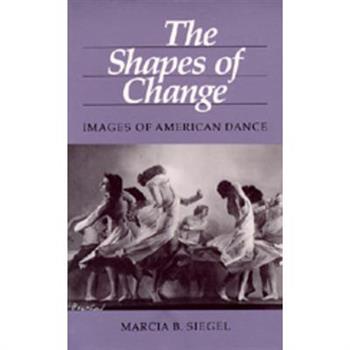
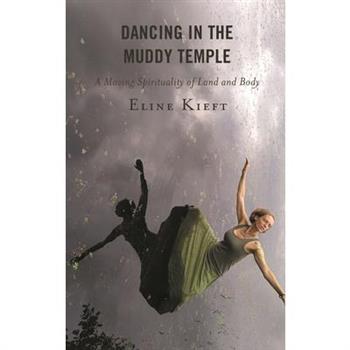
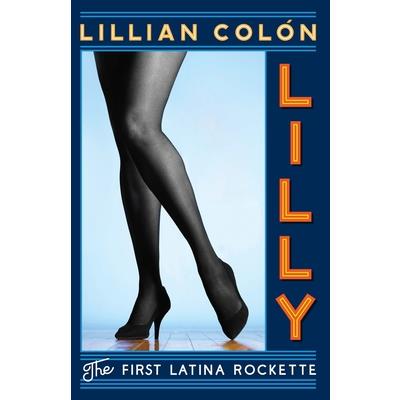

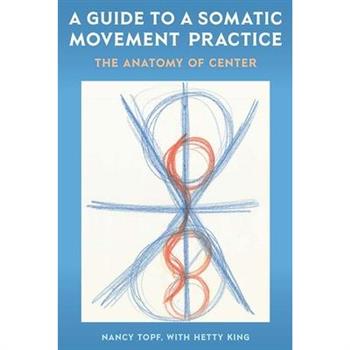
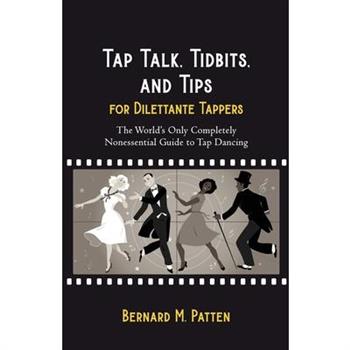
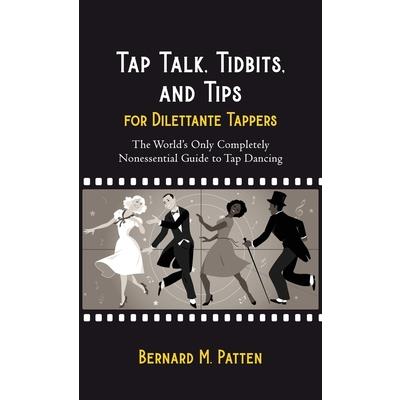
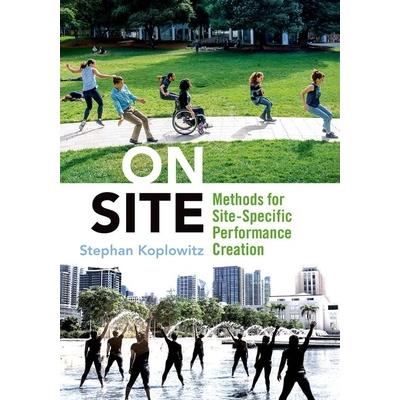
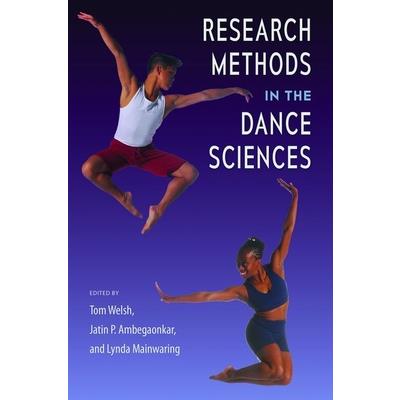
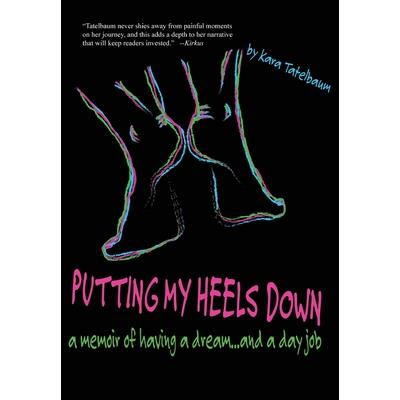

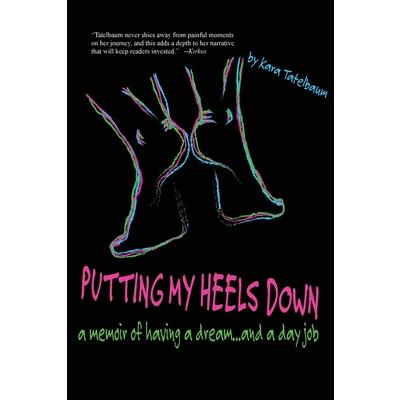

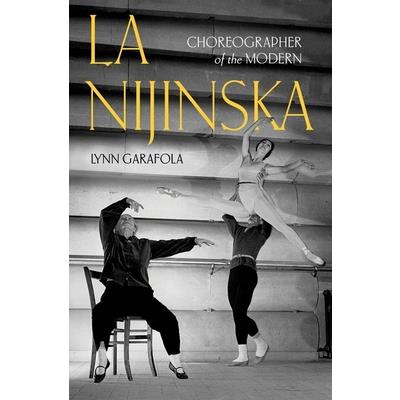


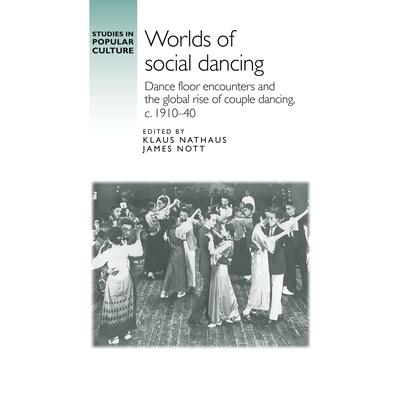

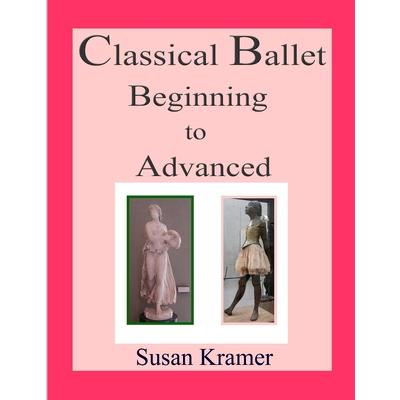


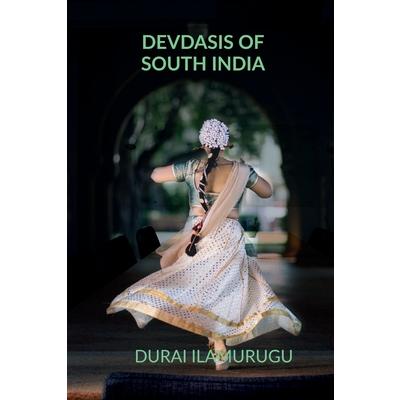
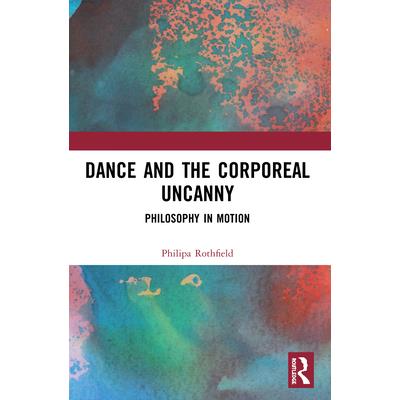
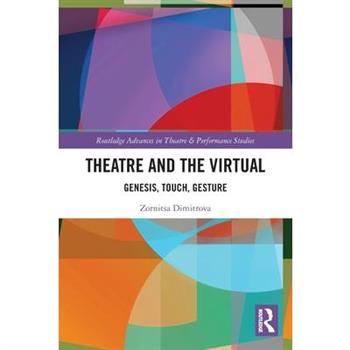
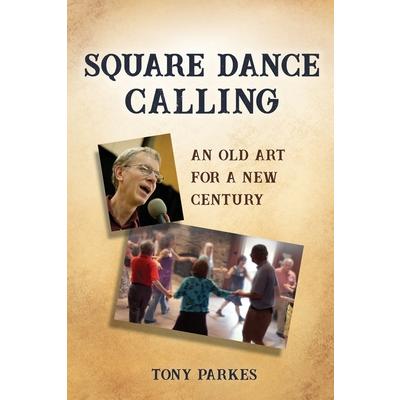
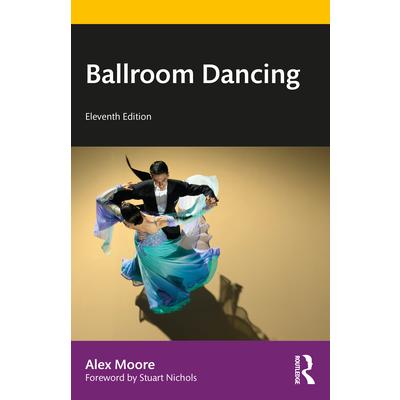
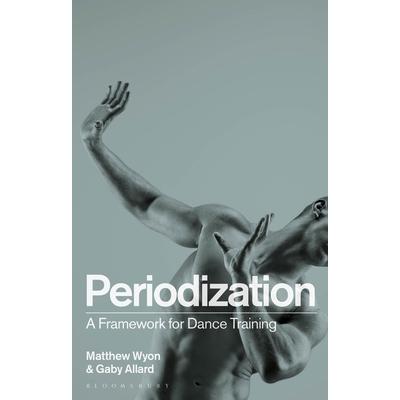
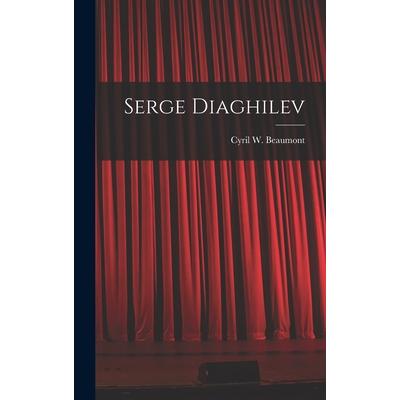
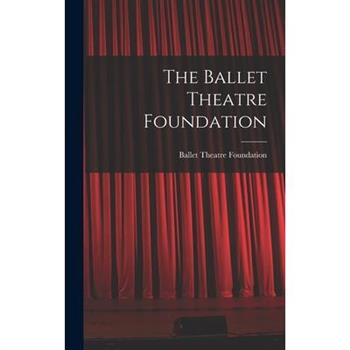
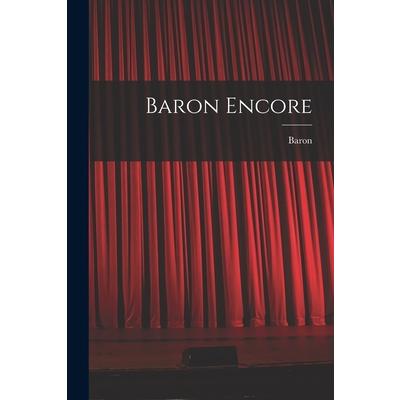


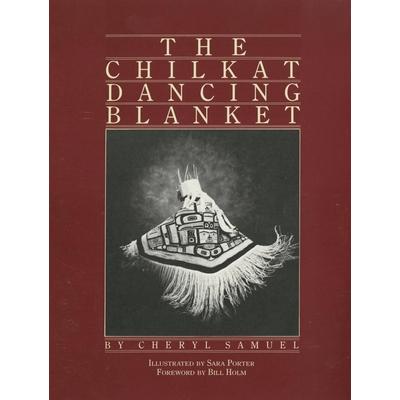
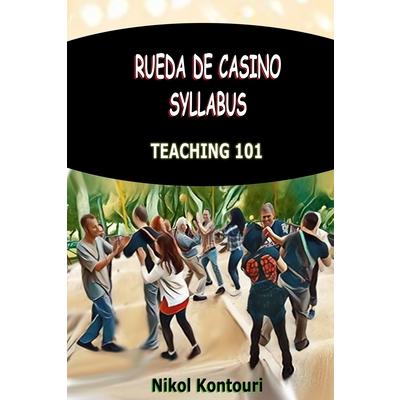
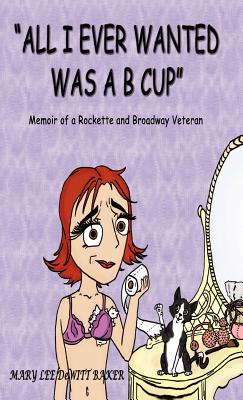

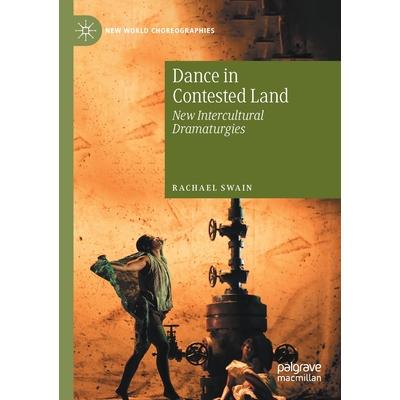
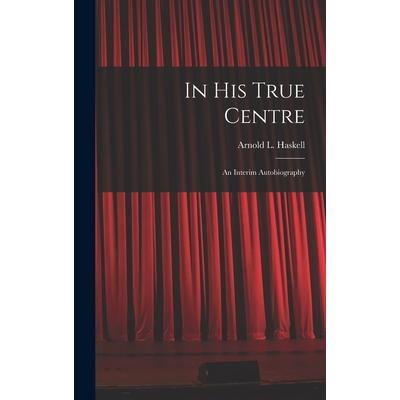

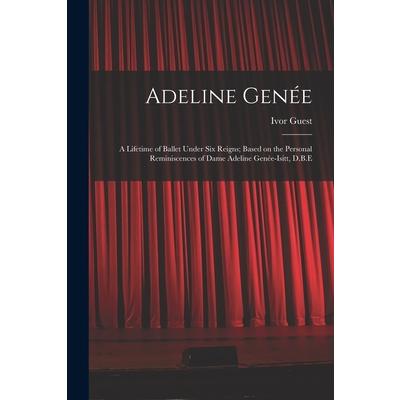

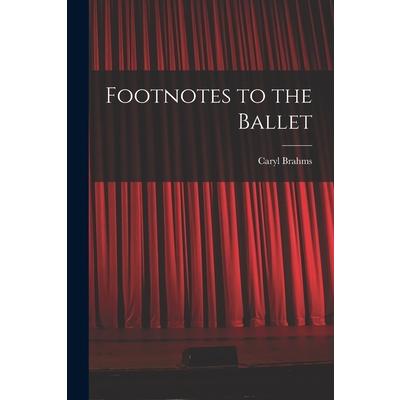
![The Modern Pleasure Dance [microform] The Modern Pleasure Dance [microform]](https://cdn.kingstone.com.tw/english/images/product/6906/9781013316906.jpg)
